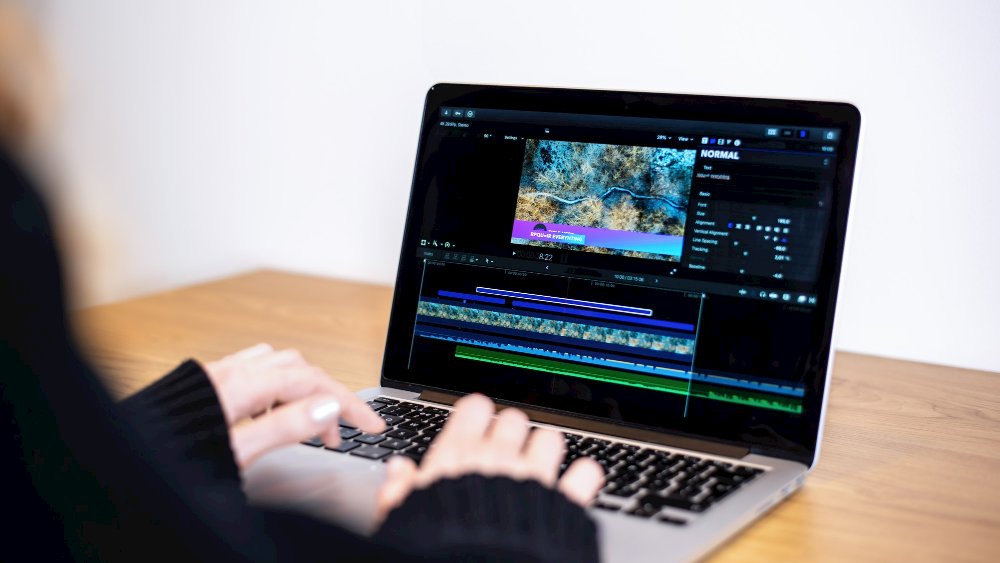Video is the most viewed form of media on the internet. The rise of Instagram and TikTok reels has increased its popularity. With the increasing demand, it can be challenging to keep up. Using social media platforms to connect with your audience and drive traffic is vital. This is the case whether you are part of a marketing team or a solo creator. Learning more about how to repurpose your videos offers you many benefits.

The power of repurposing video content for social media
Some of the benefits you can enjoy when repurposing video content are:
- Cut down on production time and reduce the time, money, and effort you spend on making videos.
- Increase your reach by exposure to those who didn’t see your message the first time.
- Make your message stick. The more people see your videos on different platforms, the more your brand will stick in their minds. It can be very valuable when marketing your products or services to have an audience that recognizes your brand.
- Create different types of content to satisfy all demands. Everyone consumes content in different ways. Some people prefer to listen to a podcast than watch a video.
- Increase traffic due to the huge number of people present on social media platforms and the algorithms they use. More people have an opportunity to see your content if there is more of it. When you consistently create good content, the social media algorithms will reward you.
- Get breathing room to improve your content creation strategies. You know that when you create a long-form video, none of it will be wasted. You can turn it into blog posts, video clips, marketing videos, and much more.
- The more content formats you create the more options it gives you. When you post your repurposed content on diverse platforms, it spreads your risk. If you have problems on one platform, you can still rely on others.
Creating a video content strategy
When creating a video content strategy you need to include the repurposing of content. You must have a solid plan in place that involves setting the goals you want to achieve with it.
Once you decide on a goal, it’s easier to determine what types of content to create to achieve it. Your particular audience could show a preference for one type of content over another. Creating more content of this kind could increase your ROI. Your goals will also help you make the decision about which social media platforms to use for distribution.
Ask yourself the following questions:
- Who is consuming your video content and how can you repurpose your content to align with their needs?
- Which social media platform do they use most? You want your content to get the most engagement so you need to make sure you distribute it in the right place.
- What resources do you have? Do you have the budget to outsource or can you repurpose content yourself? What kind of tools do you have to help you do this?
Search engine optimization (SEO) is an important part of any video content strategy and is as important for repurposed as original content. Using a platform like Cincopa helps you with video SEO. It automatically optimizes your video metadata by using JSON-LD. This helps Google to scan your web page for any embedded media like videos to index them in search. They can rank better and get more viewers. Video SEO is an important part of your overall SEO strategy and you can’t afford to ignore it when repurposing content.

Best social media platforms for video
A marketing team can’t just take video content and use it in the same format on all social media platforms. The suitable size, length, and aspect ratio for videos are different for different platforms. A social media video specs guide is available on Sprout Social and is constantly updated to reflect the latest information. Here is a brief idea of the appropriate video length for different platforms and what type of video content does well on them.
- Instagram: Videos should be 15 to 30 seconds long and be engaging and informative. Millions of viewers watch Instagram Stories every day on mobile devices. Transforming video content into Instagram reels will help you to stay relevant. Use a helpful tip, an inspiring quote, or an engaging question. The Instagram algorithm favors reels and they offer an interactive way to increase engagement.
- TikTok: Short videos perform best on TikTok. They should be less than a minute although creators can post ones of up to 10 minutes long. These short videos can be educational, humorous, or a mix of both.
- Facebook: Videos should be 25-90 seconds long to keep users engaged. Integrating short customer testimonials into a Facebook cover video could instantly boost credibility.
- LinkedIn: Videos can be anything from 30 seconds to five minutes long but shouldn’t exceed 10 minutes. Professionals on LinkedIn are a different audience from those on TikTok or Instagram. If a video contains business tips or how-to’s, you could showcase them as image carousels. The design of a carousel encourages interaction and also works well on Instagram.
- X (formerly known as Twitter): It allows videos between 20 and 45 seconds long but no longer than two minutes. On X, you could break up a video message into text-only tweets or write a thread based on the main ideas from a video. You could also create GIFs from your video.
Five ways to repurpose content for social media
There are numerous ways you can repurpose video content into new content. Offering a mix of content may include Instagram Stories, podcasts, checklists, and much more.
1. Turn a video transcript into a blog post
Transcribing any video content that you create for social media is absolutely vital for a couple of reasons. Firstly, it allows you to easily add subtitles to your social media videos. This ensures that all viewers can watch them even on mute.
Turning visual content into text gives you numerous options. You can take the transcript and turn it into a blog post that you optimize for the different social media platforms. The information is accessible and shareable which expands the reach of the content. Optimizing a blog post with relevant keywords can be part of a successful SEO strategy and drive organic traffic to a website. This increases the impact of the original video content.
2. Make a podcast
You can use audio from your videos and convert it into the right file format for a podcast. You may need to remove references to visuals and other elements to make it work. Think carefully about your intro and outro. People who don’t have enough time to watch a video may listen to a podcast episode while walking the dog etc.
A platform like Cincopa handles all the aspects of podcast hosting for you. It has an intuitive wizard to handle any conversions and transcoding. There are many podcast player templates for you to use. You can add a podcast player to your website and customize it to boost your SEO strategy. Users can access podcasts from any device. Showcasing podcast episodes in galleries makes them easy to find.
3. Create bite-sized videos and short clips
Bite-sized video has a high ROI. You can use a bite-sized video as a snippet teaser for a longer video. Entice your audience to watch a tutorial by using its most-attention-grabbing parts in a snippet. Use the insight of an expert or a surprising fact. Teasers are very shareable on social media platforms and spread the word about your content.
If you choose to repurpose a long video into stand-alone clips, make sure that each one entertains, educates, or inspires. Short, catchy clips work well on social media platforms like Instagram.
4. Repurpose videos into an online course
The global e-learning market is expanding rapidly. If you can identify videos that your audience engages with most, this could be the topic for an online course. It’s important to organize videos together in a concise way and make it easy for viewers to go from one to the next.
Cincopa is the perfect platform for repurposing your videos as an online course. It allows you to enhance, publish, and monitor them with ease. The content is accessible, organized, and secure so your audience has a seamless viewing experience. Combining multiple videos into gallery sets gives your course a systematic structure. Users can consume the content in a clear and linear way.
5. Create animated graphics and GIFs
Repurpose your video content into animated graphics and GIFs. Converting specific segments of a video in this way makes for easy sharing. It can also help to simplify complex ideas. They are ideal for sharing on social media and can be very engaging for viewers.
Repurposing video content as memes can also make it relatable and shareable. They appeal to tech-savvy audiences and can enhance your brand on social media. Memes have viral potential.

Maximize reach and engagement
It is possible to repurpose videos for use in other ways than just promoting them on social media. Including video SEO that optimizes video metadata can increase your organic rankings in search engines. You can also use them effectively in email marketing to form a strong relationship with customers.
- Repurpose videos for use on your website’s “About” page. This can make visitors stay on it for longer which can boost your website’s ranking in search engines.
- Repurpose videos for your landing pages. Videos that share stories about current customers and offer customer testimonials increase trust.
- Convert webinars into lead magnets to help generate more leads. Potential customers can gain access to them in exchange for their email addresses. When you offer educational resources, it helps to build your authority. You can then nurture your leads through email marketing. This helps you to build a relationship with them and increase loyalty and trust.
- Use a series of videos about a specific topic to create an e-book. You can use individual videos to create different chapters in the book. You can also gate this book on your website to obtain email addresses from those who want to download it.
- Turn a webinar into a tutorial video where you break information down into steps. It will help your audience to implement the knowledge they gained by participating in the webinar. This will help to enhance your expertise.
Measure the impact of your videos
Measuring the success of your videos on social platforms is essential if you want to see what’s performing well and where you can make improvements. Analytic insights are available on all social media platforms for business accounts.
Cincopa integrates with Google Analytics to consolidate all your important video metrics in one place. This allows you to see how your repurposed videos contribute to your overall marketing strategy. You can track videos, galleries, and audio analytics data. See the number of views on videos and much more.
Cincopa also offers advanced video analytics that includes heatmaps and dashboards. Heatmaps help you to visualize how a viewer interacts with a video. It shows when they drop off or skip content so you can improve your marketing videos.
Conclusion
Video content takes time to create. It involves planning, scripting, recording, and editing. It is important to get all you can out of it and this is where repurposing comes in. Repurposing your content can save you time, money, and energy.
When you use your best video content and repurpose it, you will extend your reach with less effort than it takes to create new videos. You can repurpose the content in multiple ways to use in many different places. Using repurposed videos on social media platforms is one of the best ways for a marketing team to gain access to more leads they can convert to improve ROI.









